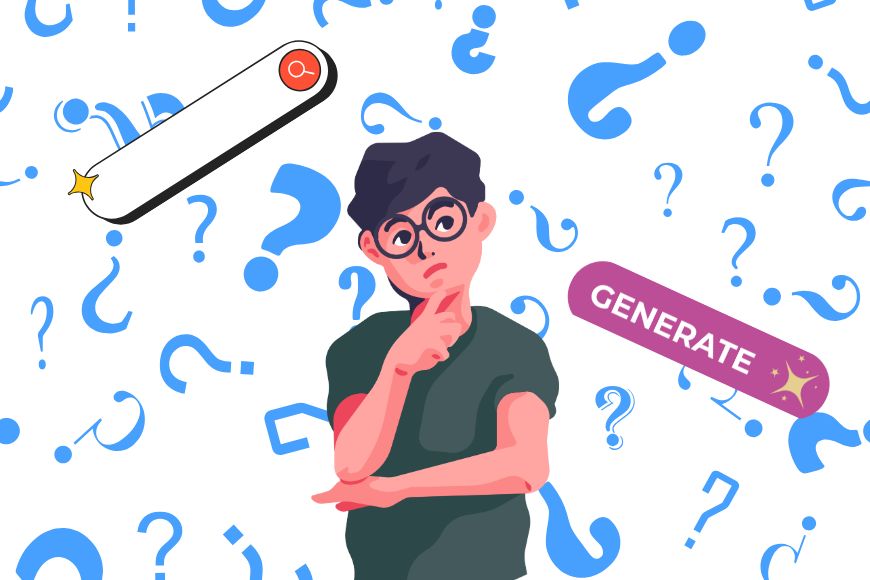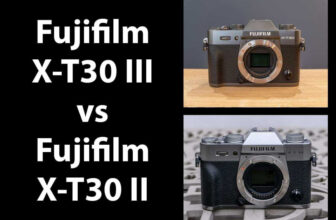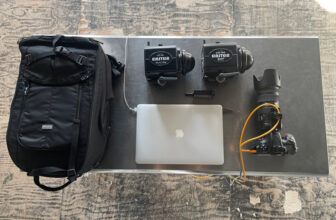
To search, or to generate—that is the question.
Wherever you look, there seems to be an AI-generated image where a photograph used to be. So, it’s fair to consider that AI may be replacing stock photos.
As a photographer and content creator, I’ve worked with creatives from many fields and spent many hours browsing stock photography websites and trying out AI tools.
So, I’ve been monitoring the shift closely. In this article, I decided to do some research and see if my impressions were accurate.
Here, I lay out the numbers, share what fellow photographers are saying, analyze the pros and cons, and explore what it all means for the future of stock photography.
Keep on reading to gain a deeper understanding of how AI is impacting the industry, and most importantly, how your skills as a photographer can shine in this new landscape.
Spoiler alert, I don’t think AI is about to completely replace stock photography. There’s still a strong need for human-made images even in the stock media market. However, the game is changing.
Let’s get into it.
Are AI Images Replacing Stock Photos?
To form a more informed opinion on whether AI images are replacing stock photos, let’s examine some objective factors.
Stats
Credit: Burak The Weekender
Unfortunately, there aren’t many public statistics available regarding what’s selling on stock media platforms. However, here are a few industry figures that can help us paint the picture.
According to a Technavio news release, the stock image market is projected to grow at a compound annual growth rate (CAGR) of 5.3%, reaching a total increase of $1.28 billion by 2029.
Adobe Stock was one of the first and is still one of the few stock media platforms that accepts AI-generated images from its contributors. In the first year, the AI-generated content comprised only 2.5% of the website’s portfolio.
After one year, by May 2024, it had reached 15%. By April 8th, 2025, Adobe Stock had almost 47.85% of their portfolio created by AI-generated images, according to Alltag eines Fotoproduzenten.
In a blog post, PhotoGPT states that over 68% of images used in social media marketing are generated by AI.
Without specifying the field in which they’re being used, they also note that the AI image editing and generation market is expected to grow at a 17.4% CAGR.
They also notice that their platform has seen a “400% increase in user-generated portraits, headshots, and themed visuals compared to 2023.”
In 2024, Getty Images shared that 98% of consumers agree that “authentic” images are essential to establish trust, and that almost 90% of people want to know when an image is AI-generated.
For more current numbers, we can look at the AI Statistics in 2025 by Digitalsilk. While these statistics aren’t specifically about visuals, they do give us a general idea of how AI is being received.
One of the stats that really surprised me says that 70% of the US population doesn’t trust companies to make responsible decisions about the use of AI in their products.
I’ll leave you to mull that over while I step away from the abstract and into the real world – where photographers are living this shift in their own skin.
What Are the Professionals Saying?


Credit: George Milton
There isn’t much buzz about this topic in popular forums like Reddit. From what I can gather, professional photographers and long-time contributors were shook up when Adobe Stock started accepting AI-generated images.
By now, things have settled down—at least, in public discussions. So, let’s see what we can find in interviews and publications.
Photographer Grant Scott published an article on The United Nations of Photography explaining why he thinks that AI will, indeed, be the end of stock photography.
I encourage you to read the entire piece, but in summary, he suggests that stock photography is so generic that AI can replicate it without difficulty. On the other hand, he says that “a ‘pure’ photograph requires a photographer to make it. A living breathing photographer.”
In a video reviewing trends and earnings from 2024, Microstock Life reports a 33% decrease in income from 2023 to 2024 despite uploading over 2500 images over the year.
He attributes this loss to the increase in competition from AI-generated images. Keep in mind that since 2024, the quality of generative AI has dramatically improved, and access to it has become wider and easier.
Of course, he is referring to contributors uploading AI-generated images to the platform and not to potential clients generating their own images.
A PetaPixel article, quoting Robert Kneschke, states that many photographers are having their submissions rejected for the first time after years of contributions, with “similar content in our collection” being the main reason.
In the same article, the exponential increase in AI-generated content in Adobe Stock is discussed. This suggests that the rejections and upload limits being imposed on photographers may be a direct consequence.
Cost
If we’re talking about free options, you can find both free stock photography websites as well as free AI-image generators. In both cases, you will be limited regarding usage license and copyright protection.
You may think that generating your own AI image is the easier and cheaper option. However, if you need images for commercial use, you will have to rely on paid services. Here is where things get tricky.
It’s difficult to make a direct comparison regarding the cost of stock photography vs AI-generated images. This is because both of them work with different plans and pricing that fluctuate depending on the type of asset, license, resolution, and, in the case of AI, the model used.
To complicate things further, the cost of buying a stock photograph can’t be compared to the cost of generating one AI image, as the former is ready to use, while the latter may not be.
To put it another way, when you buy a stock photograph, you know it’s the one you want, and that’s it. Instead, arriving at an AI-generated image that’s right for your needs may require multiple attempts and iterations, which can consume your credits.
At this point, I think it’s safe to say that using stock photography is more expensive than using AI-generated images. However, the difference is not as big as you might think.
Between the subscription plan, the multiple iterations you need to achieve the desired result, the upscaling tools to increase resolution, and the use of the latest AI models to create realistic images, the cost adds up quite fast.
So, budget is definitely a factor to consider – but it’s probably not a definitive one.
Legal Protection
One of the most significant differences between buying stock photography and generating your own images using AI-generating platforms is the legal protection it affords.
Using stock photography, you know the author and copyright holder granted permission for the images to be sold. Additionally, they should obtain all necessary permissions from individuals and property owners depicted in the picture for the platform to accept their submission.
This means that you are legally protected if you use the photographs in accordance with the platform’s terms and conditions. In fact, most of them even offer insurance to cover legal fees in case of any disputes.
Most AI image generators can’t offer these types of assurances except for Firefly and maybe a few others. This is because of the images used to train the AI models, and whether the authors had granted permission for their use or not.
Additionally, you can’t know if the AI-generated person might look too similar to a real person who didn’t grant permission to be used in your images. In fact, platforms like Dreamstime won’t accept submissions of images containing AI-generated people.
The legally safe alternative is to use AI image generators from reputable stock photography platforms, such as Shutterstock. However, this won’t give you a cost advantage.
Lastly, even if you use a legally safe platform and are therefore covered from any lawsuit, it doesn’t mean that your image will be protected by copyright.
This means that, potentially, anyone can use your image. I know that this is also the case for stock photography, but if the reason you chose AI-generated images over stock imagery was for uniqueness and originality, you may want to reconsider.
However, the laws on this matter are still in development, and they differ significantly from one country to another.
What Does the Rise of AI Mean to Stock Photographers?
Ok, we’ve already established that each type of media has its pros and cons. But what is the impact in practical terms for stock photographers?
Stock Media Platforms Are Adapting


Credit: Cottonbro Studio
Most platforms initially voted against AI-generated images. However, they need to evolve to survive. Currently, many of them accept AI content from their contributors or have developed their own AI generator for their users.
To lower the cost per image, stock media platforms are experimenting with ‘unlimited downloads’ subscriptions. This formula, although it has certain restrictions to prevent bots from doing massive downloads and such, will likely lower the price for high-demand users. This should level the playing field with AI generators.
Shutterstock started experimenting with this type of subscription, and it was recently followed by Adobe Stock, which is testing it with selected image contributors.
These plans are intended for individual users, as businesses have had access to unlimited plans for some time now.
Stock photographers are now facing new competition, obviously, but also new types of revenue. Stock image platforms had to devise new ways to compensate their contributors.
With unlimited downloads and the use of their images to train AI models, each company is trying to find a way to pay the authors.
Have they found a fair agreement? Perhaps not, but was it fair to receive 0.25 cents for a lifetime license of your photograph in the traditional scheme?
Beyond being fair or not, there are also practical questions that each photographer needs to ask themselves: Is it worthwhile? Is it still helping to pay the bills? Do you want to stay in the business with the new rules of the game?
The Challenges of Oversupply: How to Stand Out?
Oversupply on stock platforms creates several challenges that impact contributors’ workflows, acceptance rates, discoverability, and, of course, income.
Stock agencies are receiving more material per day than ever before. This means that reviewing time has gone from a few days to more than two months in some cases.
If you receive a high percentage of rejections, often marked as “content too similar” to what’s already in the catalogue, it’s a tremendous amount of time wasted.
Even when the images are accepted, it’s not easy to be seen by potential clients when there are so many choices.
In the next section of this article, I’ll explore various strategies that photographers can employ to overcome these challenges.
Authenticity


We’re rapidly normalizing the use of AI technology in every aspect of our lives. However, when it comes to visuals, this acceptance has also created mistrust.
As AI-generated images become increasingly realistic, the feeling of unease in the viewer intensifies – you never know whether the product or model you’re seeing is real or not.
In their article cited earlier, Getty Images reported that 76% of people felt they had reached a point where they could tell the difference. This was back in 2024.
With the advancements AI technology has made since then, what percentage do you think it would be today?
I don’t know if you’ve ever taken an ‘Is it AI or not’ quiz. I have, and I got more than half the answers wrong – and this is considering that visuals are my daily work.
This is a big issue that can’t be underestimated by brands when they’re deciding whether to use stock photography or generate their own AI images.
Today, photography still conveys a sense of trust that AI lacks. Perhaps this will change over time; I’m not sure. However, this is an area where stock photography has the edge.
How Can Photographers Stay Relevant?


Credit: Ketchum Community
Not everything is lost, after all; even Shutterstock’s CEO, Paul Hennessy, has said that “real photos of real things are still in demand.”
We can’t deny, though, that things are changing. It’s no longer just about quality; it’s about staying relevant and distinguishing yourself from the rest.
Generic images will, almost certainly, be replaced by AI. So, for a photographer who relied on selling a sunset, a steaming cup of coffee or a handshake, the impact will be devastating.
However, photographers who bet on originality and storytelling will have a much better chance of surviving the transition and remaining relevant.
One way to approach this is by finding a niche. Not every topic is covered by AI-generated images in the same way that not everything is photographed with a camera.
Photographers should find the gaps that need to be filled and focus on those. This requires a hands-on research approach that will likely take time and effort.
So, making money from stock photography just as a side gig to which you dedicate a few hours may need to become a permanent part of the working week.
Another approach to addressing this new scenario is to focus on the editorial side of the business rather than the commercial one. Focusing on real people and real events is something that AI can’t do.
Lastly, considering AI as a tool, rather than a competitor, can make a significant difference. Instead of focusing on the differences, photographers can use AI to enhance their images, streamline their workflow, and use better keywording for improved discoverability, among other benefits.
Furthermore, photography and generative AI are not mutually exclusive. Photographers can use AI to create new backgrounds and props, giving their photographs a unique edge.
To Sum Up
According to many sources, such as Tidewater Teddy and Grant Scott, the stock photography business was already in decline long before the arrival of generative AI.
Will this be the final blow? It doesn’t look like it. Getty Images reports that “people feel less favorably towards brands that are using AI-generated visuals to create people or products.”
Photography remains a “must-have” for industries that heavily rely on users’ trust, such as the medical or pharmaceutical industry.
However, there’s no doubt that AI-generated images have disrupted the playing field, and stock photographers have taken a major hit.
While it was already challenging to make a living solely on stock photography, it may become nearly impossible. However, if you adapt, I believe that you can still make a decent passive income.
Of course, you might need to dedicate yourself to specific niches, diversify your uploads, and start contributing with AI-generated images, among other things.
Even generative AI platforms agree that human creativity is invaluable. Stockimg.ai says that “AI serves as a complementary tool, augmenting the capabilities of photographers and content creators.”
They’re convinced that AI will never be able to replicate what a human creator can do; instead, they believe in the need to evolve together.
Personally, after all this research, I confirmed my original impression: AI images won’t replace stock photography. Yes, you can type anything and get an image generated by AI, but that won’t replace the authenticity and specificity many brands require.
You need skills and a marketing strategy to be successful, regardless of the medium you use. So, whether you use stock photos or AI-generated visuals will depend on what you want to communicate, to whom, and where – not on the cost or “simplicity.”
In the same way that businesses can use both videos and photographs in their campaigns, they can also incorporate AI images without having to exclude the others.
There’s a use for both stock photography and AI-generated images. Unfortunately, it does mean that each one will get a slimmer slice of the cake, but they will coexist.
Credit : Source Post






